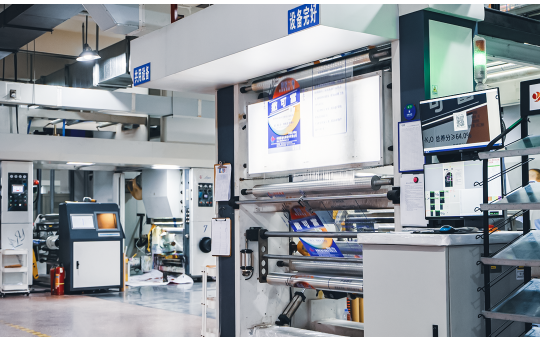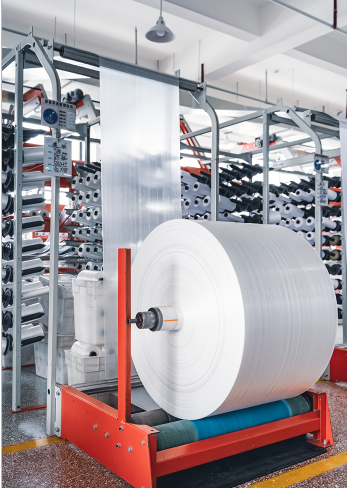적절한 인쇄 방법을 선택하는 것은 생산의 효율성과 비용 효율성을 유지하는 동시에 포장을 돋보이게 만드는 핵심입니다.
유연한 식품 포장재부터 브랜드 소매용 상자까지, 사용되는 인쇄 유형은 시각적 매력뿐만 아니라 내구성, 비용, 생산 시간에도 영향을 미칩니다.
이 글에서는 포장에 일반적으로 사용되는 다양한 인쇄 유형을 살펴보고, 각 유형의 장단점을 분석하며, 어떤 유형이 귀하의 제품에 적합한지 결정하는 데 도움을 드리겠습니다.

고객이 가장 먼저 보고 기억하는 것은 포장에 인쇄된 문구입니다.
새로운 제품을 출시하든, 이미 사랑받는 브랜드를 확장하든, 인쇄 선택은 디자인의 유연성과 처리 시간부터 패키지가 운송 중에 어떻게 견디는지까지 모든 것에 영향을 미칩니다.
포장 인쇄 산업은 다양하지만, 각 방법의 기본을 이해하면 필요에 맞는 올바른 기술을 선택하는 데 도움이 됩니다.
유연한 포장재 인쇄부터 상자의 고급 마감까지 모든 용도에 맞는 솔루션이 있습니다.
플렉소 인쇄(일반적으로 플렉소라고 함)는 유연한 포장 분야에 널리 사용되는 인쇄 방식입니다.
회전하는 실린더에 부착된 부드러운 고무나 폴리머 인쇄판을 이용해 다양한 소재에 직접 잉크를 바릅니다.
💡가장 좋습니다: 대량 식품 포장 및 인쇄, 라벨, 비닐봉투, 골판지 용기.
평판 인쇄 또는 오프셋 평판 인쇄는 선명하고 고해상도의 이미지를 생성하는 것으로 알려져 있습니다.
일반적으로 실크스크린 인쇄 상자나 복잡한 브랜딩이 있는 접이식 상자 등 고급 포장에 사용됩니다.
리소 인쇄와 플렉소 인쇄 중 하나를 선택해야 한다면 이렇게 생각해 보세요. 리소 인쇄는 품질이 좋고, 플렉소 인쇄는 양이 좋습니다.
리소는 더 세밀한 디테일을 만들어내지만, 플렉소는 장시간 인쇄에 더 빠르고 저렴합니다.
💡가장 좋습니다: 화장품 상자, 소매용 판지 상자 또는 프리미엄 제품 포장재.
디지털 인쇄 패키징은 단기 작업과 맞춤형 또는 가변적 인쇄에 필수적인 수단이 되었습니다.
기존 기술과 달리 디지털 인쇄는 실제 판이 필요 없고 디지털 디자인 파일에서 바로 인쇄합니다.
💡가장 좋습니다: 단기 식품 포장, 홍보용 상자, 개인화된 소매용 포장.
그라비어 인쇄(로토그라비어라고도 함)는 유연 포장재 인쇄에 널리 사용되는 방법 중 하나이며, 특히 장기간 인쇄 시 일관성이 중요할 때 적합합니다.
이 과정에서는 새겨진 원통을 사용해 잉크를 바릅니다.
그라비어 인쇄와 디지털 인쇄에 대한 논쟁은 결국 인쇄량에 달려 있습니다.
그라비어는 장거리 인쇄에 있어서 일관성과 속도 면에서 우수하고, 디지털은 유연성과 소량 맞춤화 면에서 우수합니다.
💡가장 좋습니다: 스낵 포장, 음료 파우치, 애완동물 사료 봉지 등 대용량 제품.
관련 읽기: 폴리프로필렌 백에 인쇄하는 방법
실크스크린 인쇄는 메쉬 스크린과 스텐실을 사용하여 표면에 잉크를 도포하는 방식입니다. 상자, 직물, 판촉물 등의 실크스크린 인쇄에 주로 사용됩니다.
💡가장 좋습니다: 브랜드 골판지 상자, 한정판 인쇄물, 홍보용 디스플레이.
다음은 몇 가지 주요 범주에서 이러한 유형의 인쇄를 비교한 것입니다.
| 인쇄 유형 | 최상의 사용 사례 | 인쇄 품질 | 비용 효율성 | 볼륨 적합성 |
|---|---|---|---|---|
| 플렉소 | 유연 포장 | 보통의 | 우수(대량) | 높은 |
| 리소 | 프리미엄 카톤 | 훌륭한 | 보통의 | 중간~높음 |
| 디지털 | 단기, 맞춤형 | 매우 좋은 | 최고(저용량) | 낮음~중간 |
| 그라비어 | 롱런 파우치 | 훌륭한 | 우수(대량) | 높은 |
| 화면 | 프로모션 박스 | 좋음 (활기찬) | 대량의 경우 낮음 | 낮음~중간 |
식품 포장 및 인쇄의 경우 안전과 시각적 명확성이 최우선입니다.
플렉소와 그라비어는 모두 식품 안전 잉크와 유연한 소재와의 호환성 덕분에 훌륭한 선택입니다.
디지털 방식은 낮은 설치 비용과 빠른 처리 속도로 인해 계절별 또는 한정판 식품 분야에서 점점 인기를 얻고 있습니다.
~에 시파우리는 귀하의 포장 요구 사항에 맞춰 모든 주요 인쇄 유형을 제공합니다.
식품 포장에 생생한 브랜딩을 적용하거나 산업용 내구성 있는 스크린 인쇄 상자를 원하든, XIFA의 자체 인쇄 기능을 통해 귀하의 포장이 기능적, 미적 기대치를 모두 충족하도록 보장해드립니다.
가장 좋은 디자인이라도 잘못된 인쇄 방법이나 인쇄 파트너를 사용하면 실패할 수 있습니다.
포장재, 원하는 용량, 예산, 디자인 변경 빈도 등을 고려하세요.
선택 시 주요 팁:
다양한 인쇄 방법이 있으므로 모든 포장 과제에 대한 솔루션이 있습니다.
음식, 화장품 또는 홍보용 디스플레이를 위해 인쇄하는 경우 각 방법의 장단점을 이해하면 예산, 일정 및 디자인 목표에 맞는 방법을 선택하는 데 도움이 됩니다.
XIFA의 유연한 인쇄 및 포장 서비스를 이용하면 품질, 일관성, 맞춤형 기능을 갖춘 검증된 기술을 이용할 수 있습니다.
우리는 모든 규모의 기업이 올바른 인쇄 공정을 통해 포장 비전을 실현하도록 돕습니다.


